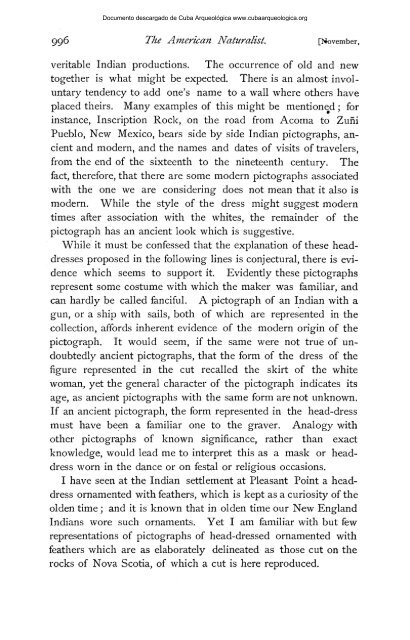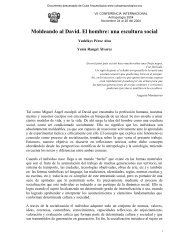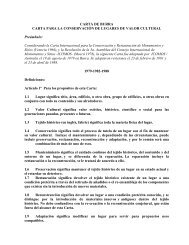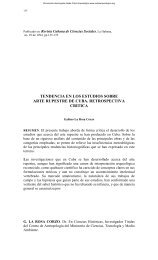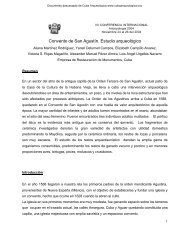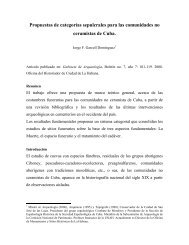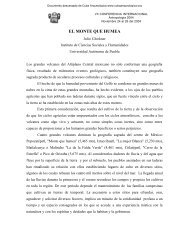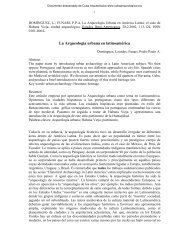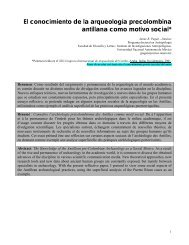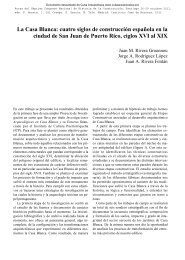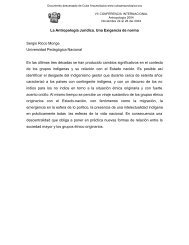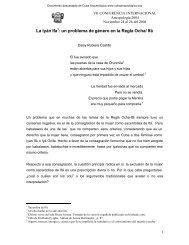A Pictograph from Nova Scotia - Cuba Arqueológica
A Pictograph from Nova Scotia - Cuba Arqueológica
A Pictograph from Nova Scotia - Cuba Arqueológica
You also want an ePaper? Increase the reach of your titles
YUMPU automatically turns print PDFs into web optimized ePapers that Google loves.
Documento descargado de <strong>Cuba</strong> <strong>Arqueológica</strong> www.cubaarqueologica.org<br />
996 The American NAatiralisi. [November,<br />
veritable Indian productions. The occurrence of old and new<br />
together is what might be expected. There is an almost involuntary<br />
tendency to add one's name to a wall where others have<br />
placed theirs. Many examples of this might be mentioned; for<br />
instance, Inscription Rock, on the road <strong>from</strong> Acoma to Zuni<br />
Pueblo, New Mexico, bears side by side Indian pictographs, ancient<br />
and modern, and the names and dates of visits of travelers,<br />
<strong>from</strong> the end of the sixteenth to the nineteenth century. The<br />
fact, therefore, that there are some modern pictographs associated<br />
with the one we are considering does not mean that it also is<br />
modern. While the style of the dress might suggest modern<br />
times after association with the whites, the remainder of the<br />
pictograph has an ancient look which is suggestive.<br />
While it must be confessed that the explanation of these headdresses<br />
proposed in the following lines is conjectural, there is evidence<br />
which seems to support it. Evidently these pictographs<br />
represent some costume with which the maker was familiar, and<br />
can hardly be called fanciful. A pictograph of an Indian with a<br />
gun, or a ship with sails, both of which are represented in the<br />
collection, affords inherent evidence of the modern origin of the<br />
pictograph. It would seem, if the same were not true of undoubtedly<br />
ancient pictographs, that the form of the dress of the<br />
figure represented in the cut recalled the skirt of the white<br />
woman, yet the general character of the pictograph indicates its<br />
age, as ancient pictographs with the same form are not unknown.<br />
If an ancient pictograph, the form represented in the head-dress<br />
must have been a familiar one to the graver. Analogy with<br />
other pictographs of known significance, rather than exact<br />
knowledge, would lead me to interpret this as a mask or headdress<br />
worn in the dance or on festal or religious occasions.<br />
I have seen at the Indian settlement at Pleasant Point a headdress<br />
ornamented with feathers, which is kept as a curiosity of the<br />
olden time; and it is known that in olden time our New England<br />
Indians wore such ornaments. Yet I am familiar with but few<br />
representations of pictographs of head-dressed ornamented with<br />
feathers which are as elaborately delineated as those cut on the<br />
rocks of <strong>Nova</strong> <strong>Scotia</strong>, of which a cut is here reproduced.


